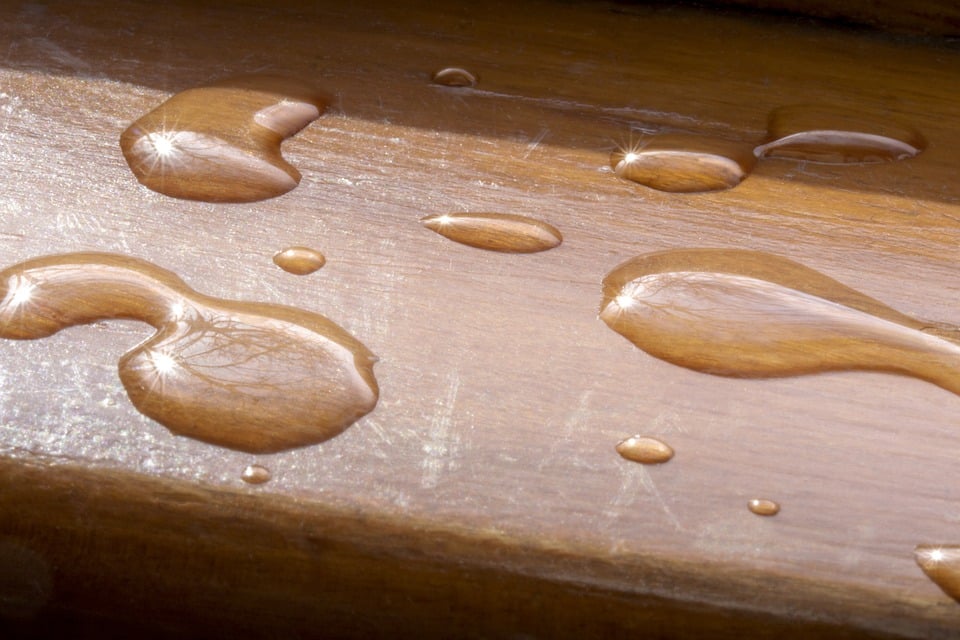Was your recent water bill higher than normal? Unless it was a mistake on the utility company’s part, there’s a chance that your home might have a hidden water leak.
Most leaks are visible and simple to fix. However, those hidden inside ceilings, pipes, or walls are often challenging to detect and could result in costly damage.
For example, the growth of a concealed leak can lead to mold growth and rot, meaning that you not only have water issues to address but also potential health issues.
That’s why it is a good idea to familiarize yourself with the common signs of hidden water leaks so that you can fix and stop the issue before it’s too late.
Here are some things to watch out for:
1. Discoloration on the ceiling
Discoloration of any type on the ceiling indicates a water leak.
While roof leaks are the common reason for discolored ceiling spots, a spot in the ceiling below a bathroom can indicate a bathroom leak.
This usually happens due to water’s continuous passage via the caulk between the bathroom tiles, especially where bathtubs are attached to the wall.
2. Worn rubber washer in faucets
Another common source of a water leak is the worn rubber washer present in your faucets. It is situated underneath the handle and can be replaced if you have access to the right tools.
First, you have to switch off the water at the cutoff valve or under the sink. Then access the gasket by removing the handles.
Many hardware or home improvement stores sell the tools and third-party gaskets you need to resolve this common issue.
3. Constantly ticking water meter
If you get a higher water bill despite your water usage remaining constant, it’s a good idea to check your water meter for unexpected spikes. When you go outside, make sure that no one in your family accidentally leaves a water source turned on. Switch off your main water valve and then inspect the water meter.
Pay attention to the leak indicator and check for any movement. This will depend on your meter type, but it will be a triangular dial for most homeowners. If the dial turns after you’ve turned the water valve off, you probably have a plumbing leak somewhere.
You can also take a second water reading after an hour or two to see if anything changes. However, make sure no one uses any water during this period. If the dial is still turning, you certainly have a water leak.
4. Weakened flooring
If your kitchen flooring has loose tiles or the caulking has started to peel or crack, a hidden leak from the pipe under the floor is probably the cause.
In a bathroom, the floor might start staining, warping, or develop a soft spot. In basements, carpeted areas can develop a musty odor or become moist when there are water leaks underneath the flooring.
Damaged floors are dangerous as they are a critical part of your home’s foundation. Consider repairing them immediately to prevent a complete collapse which can be costly as well as time-consuming to repair.
5. Mold growth
If mold or mildew appears on your baseboard, ceiling, or wall, it is very likely that there is a leaking pipe behind the area. Mold growth resulting from water leaks can pose a serious health risk, which is why it’s crucial to detect and address it as soon as possible.
Be especially vigilant if your home is a few decades old; inspect the HVAC ducts and other moisture-ridden areas for mold/mildew growth.
If you identify mold growth anywhere, contact a professional for mold removal immediately. If you wait it out, it can get worse, leaving you with a real mess on your hands.
6. Wet spots
Sometimes, you’ll come across a wet spot in your yard or living room. Not worrying too much, you’ll clean it up, only to discover that it has returned the next time you check.
This is a red flag that you have a water leak nearby. Since the water needs a space to settle, it’s pooling in the wet spot. In normal circumstances, the spot should dry up entirely.
7. Low pressure
If you can’t get your water pressure up, you have a plumbing leak somewhere.
This might go unnoticed when the leak is small. However, any fluctuation in water pressure is a good enough reason to call in a professional.
Often, homeowners don’t know about a hidden leak until their water pressure is completely lost.
8. Underground leak
A concealed or underground leak usually occurs in the pipes between your property and the meter box. It’s challenging to detect as these pipes run underground.
However, the following signs indicate that water is leaking below the ground:
- Muddy or soft areas in the garden
- Cracking in the outdoor pavement
- Wet spots in the meter box
- Water puddles around the street
- Greener than usual grass patches
9. Plumbing sounds
When the plumbing in your home is relatively quiet, it’s a sign that everything is working as it is intended to.
But when you hear rattling or other weird noises in the plumbing, it could be a sign that something is loose in the lines. And if that is true, water could be leaking inside the walls.
So keep an ear out for water noise when fixtures are turned off, or any other noises like hissing or rattling in the pipes. When you hear something, call in a professional as it could indicate a water leak.
Conclusion
Trying to find a hidden water leak can be a challenging job. You can speed things up by looking for the signs that we have listed above.
In case of water damage, you can get in touch with our helpful staff. The Disaster Company specializes in mold and water cleanup in Davis County and surrounding areas. Contact us today to learn more about how we can help you avoid water-related catastrophes.

